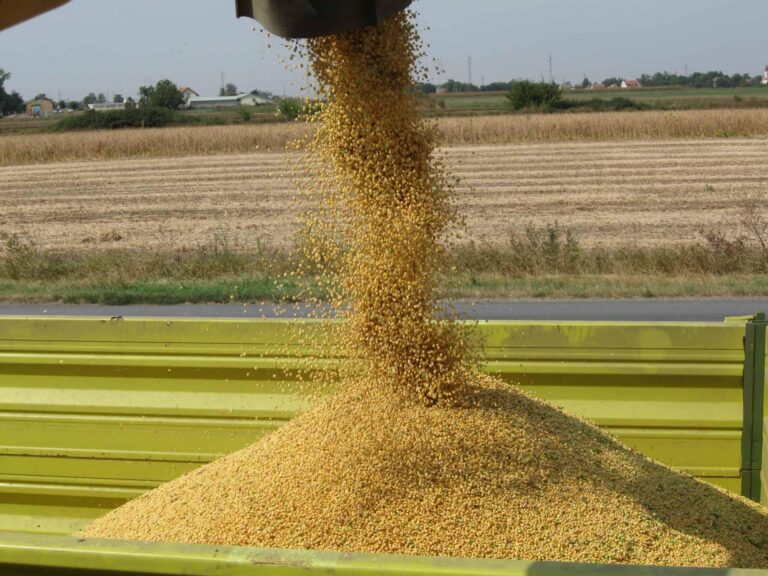Argentina has officially wrapped up its soybean harvest, marking a significant milestone for the nation’s agricultural sector this season. The completion comes as an unusually early cold spell sweeps across key farming regions, providing timely conditions that experts say are accelerating the development of the country’s winter wheat crop. This climatic shift is being closely monitored by producers and analysts alike, as it may influence planting decisions and yield prospects in the months ahead.
Argentina Wraps Up Soybean Harvest with Strong Yields in Key Growing Regions
Argentina’s soybean harvest has reached completion across its primary growing regions, delivering yields that exceeded expectations despite challenging weather earlier in the season. Farmers in provinces like Buenos Aires, CĂłrdoba, and Santa Fe reported robust pod formation and grain filling, attributing improvements to well-timed rainfall and cooler temperatures during critical growth stages. These favorable conditions helped mitigate the impact of previous drought concerns, placing Argentina on track to maintain its position as a global soybean powerhouse.
Key factors contributing to the strong harvest:
- Consistent rainfall patterns in late spring and early summer
- Lower-than-average temperatures reducing crop stress
- Advanced planting techniques and seed technology adoption
| Region | Average Yield (tons/hectare) | Harvest Completion (%) |
|---|---|---|
| Buenos Aires | 3.8 | 100% |
| CĂłrdoba | 3.5 | 100% |
| Santa Fe | 3.6 | 100% |
Cold Spell Accelerates Wheat Growth Enhancing Crop Quality and Yield Prospects
The recent cold spell that swept across Argentina’s wheat-growing regions has had a remarkable impact on crop development. Farmers report that the cooler temperatures have extended the dormancy phase, promoting stronger root systems and enhancing the overall vigor of young wheat plants. This environmental boost is expected to translate into improved stalk resilience and grain filling, factors critical for maximizing yield and crop quality. Agronomists highlight that controlled stress from cold conditions can synchronize plant growth, resulting in more uniform maturation-a key advantage for harvest planning and processing efficiency.
Early assessments also underscore several agronomic benefits linked to this weather pattern, including:
- Improved nutrient uptake due to slower metabolic rates during the cold spell.
- Reduced pest and disease pressure from cooler temperatures.
- Enhanced grain protein content attributable to optimal growth conditions.
| Wheat Development Factor | Impact | Expected Outcome |
|---|---|---|
| Root Development | Strengthened by cold-induced dormancy | Higher nutrient absorption |
| Growth Synchronization | Even maturation period | Easier harvest logistics |
| Disease Control | Lower pest activity | Reduced crop losses |
Expert Recommendations for Managing Wheat Development Amid Unseasonal Weather Patterns
Farmers face increasing challenges as unpredictable climate fluctuations continue to affect wheat growth cycles. Agronomists emphasize the importance of closely monitoring soil moisture levels and adjusting irrigation schedules to mitigate the impact of sudden cold spells. Additionally, integrating resistant wheat varieties that can tolerate lower temperatures helps preserve yield potential during abrupt weather shifts. Experts also advocate for diversified crop rotations to maintain soil health and improve resilience against environmental stressors.
Successful wheat development under erratic weather hinges on proactive management strategies. Key recommendations include:
- Utilizing weather forecasting tools to anticipate cold spells and plan field operations accordingly.
- Applying balanced fertilization to support robust plant growth, especially nitrogen adjustments that align with cooler, slower development phases.
- Implementing pest and disease scouting more frequently, as changing conditions can alter pathogen behavior.
| Management Practice | Benefit | Recommended Timing |
|---|---|---|
| Soil Moisture Monitoring | Prevents water stress | Weekly during growth stages |
| Cold-Tolerant Varieties | Maintains yield stability | At sowing |
| Fertilization Adjustment | Optimizes nutrient uptake | Mid-vegetative stage |
Concluding Remarks
As Argentina closes the chapter on its soybean harvest, farmers now turn their attention to the promising prospects of the wheat season ahead. The recent cold spell has provided an essential boost to wheat development, raising expectations for a strong crop yield. With favorable weather conditions and strategic agricultural practices, the nation’s grain sector looks poised to sustain its vital role in both domestic markets and global exports. Stakeholders will be watching closely as the season progresses, hopeful that these positive trends will translate into continued success for Argentina’s farming community.




